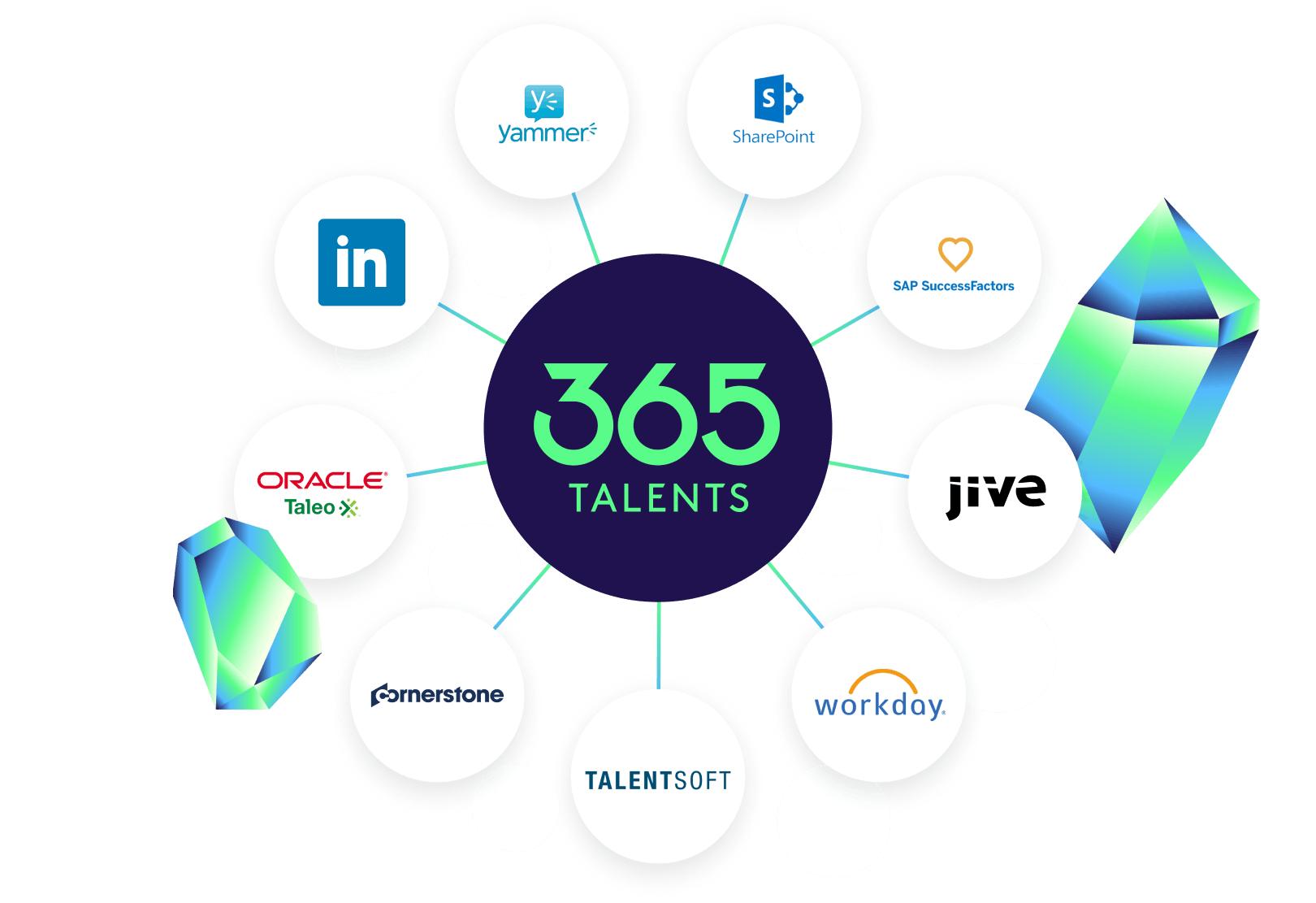Why you need multilayered skills tech in your HR stack

What do millefeuille and skills technology have in common?
For the confectionary connoisseur, the millefeuille is one of the most artful of French pastries. Airy, flaky and fluffy all at once, the traditional millefeuille is made with three layers of puff pastry, filled with cream and decorated with fondant.
While airy, flaky or fluffy aren’t the qualities you should be looking for in a new tech solution for your HR stack, multilayered is an absolute must.
Whatever HR tool you choose, your skills technology needs to operate on three levels:
- Employee engagement
- Offer-and-demand matching
- Decision making
Let’s get into what that means.
For the purposes of this breakdown, we’ll look at an internal talent marketplace as your piece of skills technology, though the guidelines can be applied to any.
3 layers of an effective internal talent marketplace
The internal talent marketplace has become an essential part of HR tech stacks around the globe. Implemented well, an ITM connects employees with opportunities and helps companies to improve their engagement, find new talent and move quickly and confidently toward their next transformation.
To do this, however, it’s essential that your internal talent marketplace has three layers.
Layer 1. Empowering employee engagement
Everything builds on employee engagement. So it should come as no surprise that the first layer of an effective internal talent marketplace is the employee engagement layer.
However, your technology needs to encourage employee engagement so that your ITM can, in turn, be catalyzed by your employee engagement. It’s a harmonious cycle.
In practice, this means your technology needs to be agile and able to understand a vast array of inputs, so that engagement is easy and effortless for your employees.
“[The skills technology you bring in your company] has to be intelligent and agile enough for your employee engagement,” 365Talents CEO and co-founder Loïc Michel explained recently on the Humanalytics podcast. “[Your employees] have to be able to engage and fill in information and to express themselves the way they want.”
Luckily, there is artificial intelligence specifically designed for this purpose. Skills Intelligence, such as that created by 365Talents, allows employees to define their skills and ambitions in their own words, on their own terms. This continuously improves the accuracy of the employee’s profile for better matching and a clearer view on a company’s internal skills.
Which brings us to layer number two.
[The skills technology you bring in your company] has to be intelligent and agile enough for your employee engagement. [Your employees] have to be able to engage and fill in information and to express themselves the way they want.
Loïc Michel
,365Talents CEO and co-founder
Layer 2. Dynamic offer-and-demand matching
After the engagement layer comes matching. The matching layer is what allows you to see new possibilities and explore a world beyond job descriptions. But just like employee engagement, for the matching layer to be effective, it needs to be well-designed specifically for that purpose.
“Then [your technology] has to be good enough and structured in another way… to dynamically match the offer and demand for skills so that you can curate and personalize the talent experience of any employee with a value set of opportunities in the company,” Loïc continues. “That's the second layer. The skills, technology and the skill engine has to be good for the second layer to match offer and demand.”
Layer 3. Analytic decision-making
The third layer is the decision making layer. This layer is where you find actionable insights and analysis that can support your strategic workforce planning.
It’s also the layer where the difference of a multilayered skills solution can be seen most profoundly.
“If you don't have the two first layers, the top decision layer won't be that “top” because it will come from nowhere,” Loïc says. “It might be useful to have for some board presentations and to say, okay, we are here and we should be there. But actually, it won't be a good reflection of what your particular workforce is today and how you could transform and engage with the office in the future.”
In other words, most talent technology can give you broad insights on your industry and the general skill needs for your field. But if you want deeper analysis that is reflective of what your people and your company, specifically, you need multilayered technology.
If you don't have the two first layers, the top decision layer won't be that “top” because it will come from nowhere. It might be useful to have for some board presentations and to say, okay, we are here and we should be there. But actually, it won't be a good reflection of what your particular workforce is today and how you could transform and engage with the office in the future.
Loïc Michel
,365Talents CEO and co-founder


Don't let your HR projects fail to launch
42 percent of respondents rated their HR technology implementations as failures after two years, according to Josh Bersin Co.
As a mission control for sharing skills data, integration with 365Talents can supercharge HR projects across your tech stack with skills data so you can boost adoption and avoid false-starts before you launch.
Discover our integration capabilities and see how 365Talents can transform your talent management strategy.

How to choose a multilayered internal talent marketplace
When considering your options for an internal talent marketplace, there are strategic and functional questions to consider.
For functionality, you should consider questions such as quality of technology, ease-of-integration with your existing tools and UX, as well as other components that go along with SaaS solutions. (For example, how important is it for you to have access to a dedicated support specialist?) But before you begin to filter out your options by such parameters, you must consider your HR strategy.
Ask yourself:
1. What are my company needs?
2. How important is talent experience?
If you're looking for something to replace your current HCM system, run payrolls and administrative tasks, manage one-off moves and offer quick fixes, a traditional ITM is likely to get the job done. You can focus on your practical, functional requirements.
But if you're instead driven to create a great employee experience that empowers your people to take control over their career paths while giving your HR teams a tool specifically designed to help them identify and develop the skills needed for strategic workforce planning, you may want to look instead to talent experience solutions.
Why choose talent experience for talent management
Talent experience platforms like 365Talents allow a strong alignment between employee ambitions and company goals.
By letting employees find meaningful work through which to develop their skills and expertise, employers can see higher levels of productivity and a stronger sense of commitment.
Talent experience technologies also boost engagement by creating a more open and flexible path for career and skill development that matches employees' expectations for a modern workplace. They also put your people in the driver's seat of their own development, giving them the tools to discover new opportunities and make informed decisions about where they want to go next.
Finally, prioritizing talent experience is how you can create a "gig" economy within your company by using matching algorithms, predictive analytics and user input to connect employees with opportunities tailored to their skills and preferences.
In short, a multilayererd talent experience platform gives your company the ability to become a more democratic and inclusive people-first organization through empowering your employees with a decentralized, personalized approach to talent mobility.
Ready to chart a new course for your people at work? To learn more about the importance of multilayered skills technology, book a demo today.
Uncover more HR insights









